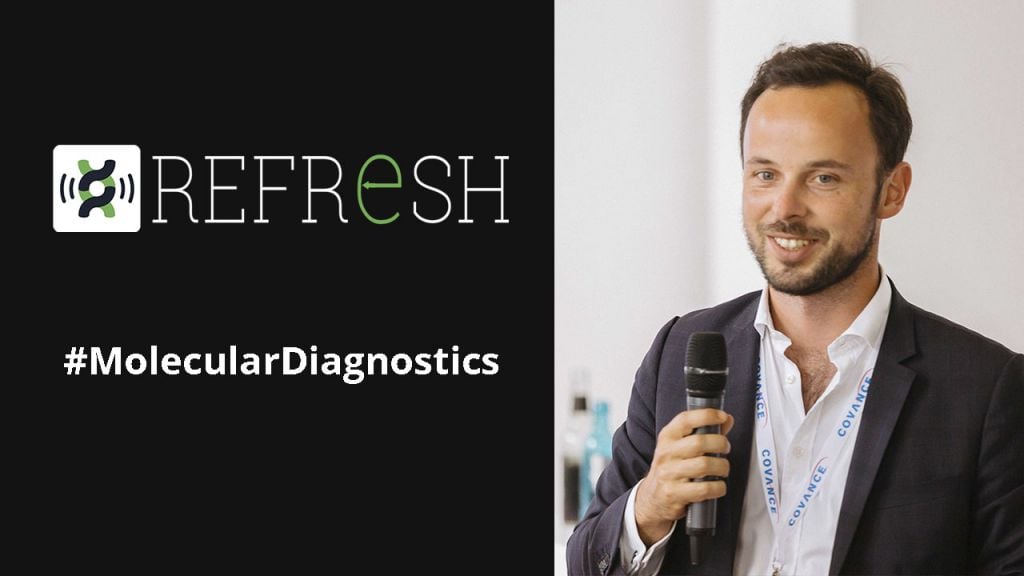Newsletter Signup - Under Article / In Page
"*" indicates required fields
It’s been more than a month since Refresh, but the topic of our last expert track is as current as ever: DNA analysis for the early detection of genetic diseases.
Charles Caulliez, Director of Corporate Business Development at Genomic Vision, started his talk by introducing the company: In 2004, Aaron Bensimon (CEO) founded Genomic Vision as an R&D company. The focus on research and development remained until 2014, when the company recruited its commercial operations team with the thought of turning their technology into a commercial product. Said technology was discovered at the Pasteur Institute in Paris by Aaron Bensimon and is called Molecular Combing of DNA.
The process can be divided into three separate steps. The first step, the extraction process, starts with the extraction of at least 1 million B-cells and T-cells from blood. These cells are then placed on an agarose substrate where the cell membranes and organelles are enzymatically digested. After the agarose is digested too, a pure DNA solution remains.
In the second step, which is called ‘combing’, the DNA is placed into a small reservoir. A silanized coverslip is dipped into the DNA solution and because of the surface tension, the double stranded DNA sticks to the slip and is stretched across it.
“There is a metaphor I like to use: it is like when you’re swimming under water, when you reach the surface, the water nicely combs your hair backwards. It is the same with the DNA strands on the coverslip,” explains Caulliez.

One coverslip can ‘catch’ up to 300 copies of the human genome, resulting in much longer reads than other technologies, such as next generation sequencing allow. The third step, is the scanning of the DNA. Aided by fluorescent probes, which attach to specific sequences, the scanner can automatically detect specific patterns, for example the biomarkers of different diseases.
The company has developed several tests to scan for different diseases, including spinal muscular atrophy (SMA) and three oncology tests for breast cancer, colon cancer, and cervical cancer. The technology can also be used for the screening of drug candidates.
Caulliez then went on to discuss Genomic Vision’s gene editing and gene analyzing tools, their partners and projects, and the clinical trials they are involved in.
Watch the video here to learn more about Genomic Vision and their state of the art DNA molecular combing technology!






